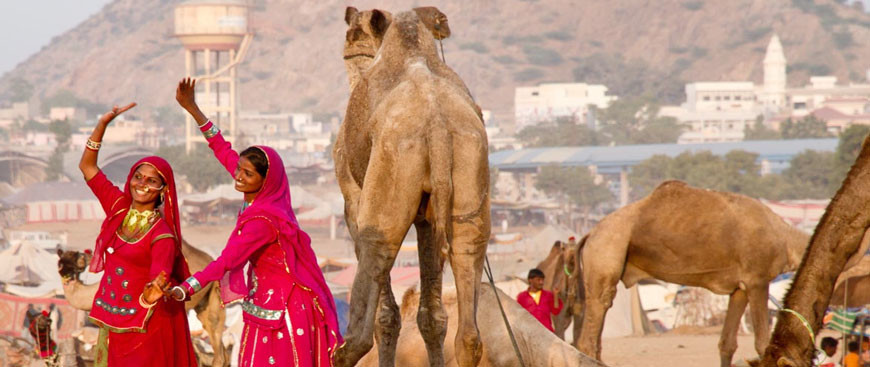Pushkar in Rajasthan is a wonderful fusion of religion, history and mythology. The name instantly reminds us with all stories of Brahma and his consort. And though it is believed that it is the place where the one and only Brahma temple is located, but it is not like that. True, it is the only place where the principle deity is Brahma and people seek the path of salvation through dip in the Brahma Lake.
According to a legend, Lord Brahma was in search of an auspicious place to perform yagna and was flying over the Rajasthan desert on his swam. Some lotus petals fell from his hand and wafted down. Miraculously, blue lakes sprang up where the flowers touched land. A lake sprang up at Pushkar, and that is how the scenic holy lake came into being. A dip in the lake is supposed to give you and seven generations in your family, that ultimately salvation that pilgrims travelling from world over are seeking. That’s Pushkar-the-ultimate pilgrimage-for you!

The holy town of Pushkar is situated just 12 kilometers from Ajmer, another pilgrimage place known for Dargah of Khwaja Chisti. Steeped in mythological nuances Pushkar is frequently by tourists from across the globe, who appreciates the true essence and sanctity of the place. You can see them partake in the gaiety and festivities with gay abandon through the fairs and festivals. Camel safaris, shopping in the colourful bazaars, visiting the temples, performing pujas at the ghats or simply spending time in calm contemplation by the lake, there is lots that you could look for in Pushkar.
Like any other place in Rajasthan, Pushkar has a history to it, which is bound to interest you. For instance, references of the city can be found in Fa-hein’s account in the 4th century AD. The great Hindu epics of Mahabharata and Ramayana make references to this religious place regarded to be Adi Tiratha. If you look at it mythological aspect of the place, it is said that after you visit the four dhamas, spiritual places in India, you need to visit Pushkar to complete you salvation. And hence Pushkar, gains immense significance and forms an integral part of the pilgrimage cycle.
Few things can match the effervescence, vigor and brightness of a traditional fair like the world acclaimed Pushkar Fair. The picturesque Pushkar Lake surrounded by hills on three sides and sand dunes on the fourth makes a perfect site for the annual religious and cattle fair. And this is when Pushkar the otherwise quiet town pulsates with life!
Top Attraction to Visit in Pushkar
Pushkar Lake
Budha Pushkar and Sudhabai
The Brahma Temple
Savitri Temple
Atmateshwar Temple
Old Rangji Temple
Man Mahal
Pushkar Ghats
Pushkar Market
Book Pushkar Fair Tour package
Find Religious Places in Rajasthan
